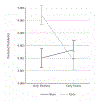Adoption: A Strategy to Fulfill Sex Preferences of U.S. Parents
- PMID: 31105334
- PMCID: PMC6521878
- DOI: 10.1111/jomf.12541
Adoption: A Strategy to Fulfill Sex Preferences of U.S. Parents
Abstract
Objective: This article examines adoption as a strategy used by parents to fulfill their preference for a specific sex composition among their children in the United States.
Background: Evidence from the United States suggests that parents with children of the same sex are more likely to continue childbearing, as parents generally desire at least one girl and one boy. What is unknown, however, is whether parents use adoption to fulfill this same preference.
Method: Using data from the 2016 American Community Survey (n=1,107,800 children), the authors test the relationships among the sex composition of preceding siblings, child sex, and adoption status.
Results: Children who had same-sex preceding siblings were more likely to be adopted, as opposed to biologically related to their parents, than children who had mixed-sex preceding siblings. Further, adopted children were more likely to be of the missing sex (i.e., adopted girls were more likely than were adopted boys to have only preceding brothers).
Conclusion: These findings suggest a need to consider parental sex preferences and child sex in studies on adoption decisions. Further, adoption provides one mechanism parents can use to achieve a balanced sex composition among their children.
Keywords: Adoption; Children; Demography; Family Formation; Gender; Siblings.
Figures
References
-
- Baccara M, Collard-Wexler A, Felli L, & Yariv L (2010). Gender and racial biases: Evidence from child adoption CESifo Working Paper Series No. 2921. Retrieved from https://cepr.org/active/publications/discussion_papers/dp.php?dpno=7647
-
- Ben-Porath Y, & Welch F (1976). Do sex preferences really matter? The Quarterly Journal of Economics, 90(2), 285–307. 10.2307/1884631 - DOI
-
- Blau FD, Kahn LM, Brummund P, Cook J, & Larson-Koester M (2017). Is there still son preference in the United States? (NBER Working Paper 23816). National Bureau of Economic Research; 10.3386/w23816 - DOI
-
- Brooks D, James S, & Barth RP (2002). Preferred characteristics of children in need of adoption: Is there a demand for available foster children? Social Service Review, 76(4), 575–602.
Grants and funding
LinkOut - more resources
Full Text Sources

